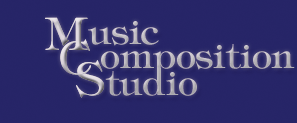Magic Hands-o-Music
Are you looking for the Magic Hands-o-Music (also known as the hands-o-pitches) developed by Dainis W. Michel?
Are you looking for a straightforward system that can help you with any instrument?
Are you looking for what just might be the solfeggio of the 21st century?
Well, here they are, the Magic Hands-o-Music, here for you, authorized and legal, straight from the "inventor," for FREE. With practice, you'll be unstoppable!

About 1,000 years ago (I'm not kidding), a Benedictine monk and music theorist
named Guido d'Arezzo wanted to make the process of sight-singing more efficient.
He invented what is now known as the Guidonian hand.
Guido d'Arezzo's hand was perfect for the music of the day.
Since Guido, we've had 1,000 years of musical progress. The music of today
modulates, seeks new tonal areas, and often frees itself of traditional
tonality. In order to make the process of sight-singing and notating 21st
century melodic material more efficient, I offer my "magic hands-o-music,"
on which one can depict, find, and sing any note on the piano keyboard and
beyond (one can also accomodate 1/4 tones and the pitch adjustments required
for proper intonation).
Tip:
As you sing the note, use the syllable of the Note-number and touch the correct Note-number with your thumb or with your other hand. Soon, you'll be flying through your intervals like a pro!
The magic hands-o-music can be used for any music learning level or experience.
If you are interested in songwriting, and would like an in-depth method for doing so (that, of course, includes the magic hands-o-music to make everything easier), then the only course available in the world today authorized to use Dainis W. Michel's simple yet powerful methods can be found here: eBook: How to Write Your Songs Down.
Note:
There are straightforward solutions to the challenges presented by singing the syllables of Integer Notation. The solutions stem from understanding the difference between a cardinal number and an ordinal number. Are you in a scale or not? If so, then there's a first, second, and third note in the scale. In my opinion, it's perfectly acceptable to take 12 blocks (notes), put numbers on the blocks (0-11), and then play with the blocks however we like. In that situation, if the first block happens to have the number 7 on it, and the 2nd block has the number 9 on it, what's the big deal?
--Dainis W. Michel
November 21, 2006
